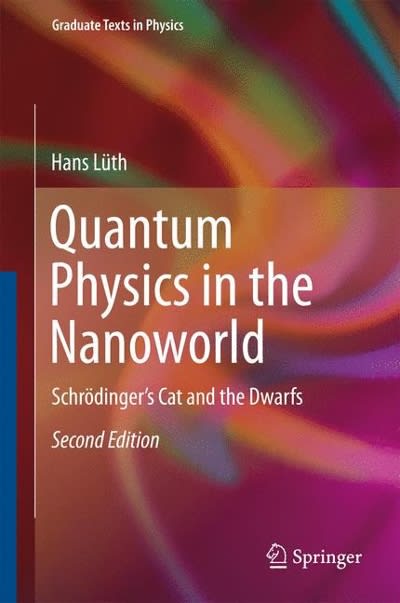Question
Experiment: Collisions and Momentum We are investigating Conservation of Momentum in this experiment, so let's remind ourselves what that means. The momentum of an object
Experiment: Collisions and Momentum
We are investigating Conservation of Momentum in this experiment, so let's remind ourselves what that means. The momentum of an object (p) is its mass multiplied by its velocity, so we have
p = mv
The momentum and velocity are in bold because they are both vectors. That means they both have a magnitude and a direction. Momentum is a vector quantity. This distinguishes it from energy. The Law of Conservation of Momentum says that, in a collision, in the absence of friction or other interfering forces, the initial momentum will equal the final momentum. If you observe a collision just before and just after a collision, it should be true that the measured initial momentum equals the measured final momentum, within experimental limits.
In this video, we will see two carts colliding. One cart (m1) will be moving with an initial velocity (vi) and the other (m2) will be stationary (v=0) before the collision. The carts will stick together after the collision and move at a slower final velocity (vf) thereafter. We are going to vary the masses of the carts during this experiment and see how well momentum is conserved during these collisions. Make sure to record all your masses in kg (divide the grams by 1000).
| Mass of the moving cart alone (m1) | .331 kg |
| Mass of the stationary cart alone (m2) | .271 kg |
| Mass of each additional weight | .124 kg |
Trials:
1. Both carts alone with no additional weights
2. Moving cart has two additional weights, stationary car has no additional weights
3. Moving cart has four additional weights, stationary car has no additional weights
4. Moving cart has no additional weights, stationary car has two additional weights
5. Moving cart has no additional weights, stationary car has four additional weights
| Trial | m1 (kg) | vi (m/s) | pi = m1 x vi (kg m/s) | m2 (kg) | vf (m/s) | pf = (m1 + m2)vf (kg m/s) | % Difference (pi vs pf) |
| 1 | .331 | .725 | .2340 | .272 | .389 | .2343 | 2.38 % |
| 2 | .579 | .347 | .2009 | .272 | .213 | .1812 | 10.4 % |
| 3 | .827 | .543 | .4490 | .272 | .385 | .4231 | 5.94 % |
| 4 | .331 | .704 | .2330 | .521 | .252 | .2147 | 8.18 % |
| 5 | .331 | .893 | .2956 | .768 | .259 | .2850 | 3.65 % |
Percent Difference = |

Step by Step Solution
There are 3 Steps involved in it
Step: 1

Get Instant Access to Expert-Tailored Solutions
See step-by-step solutions with expert insights and AI powered tools for academic success
Step: 2

Step: 3

Ace Your Homework with AI
Get the answers you need in no time with our AI-driven, step-by-step assistance
Get Started


